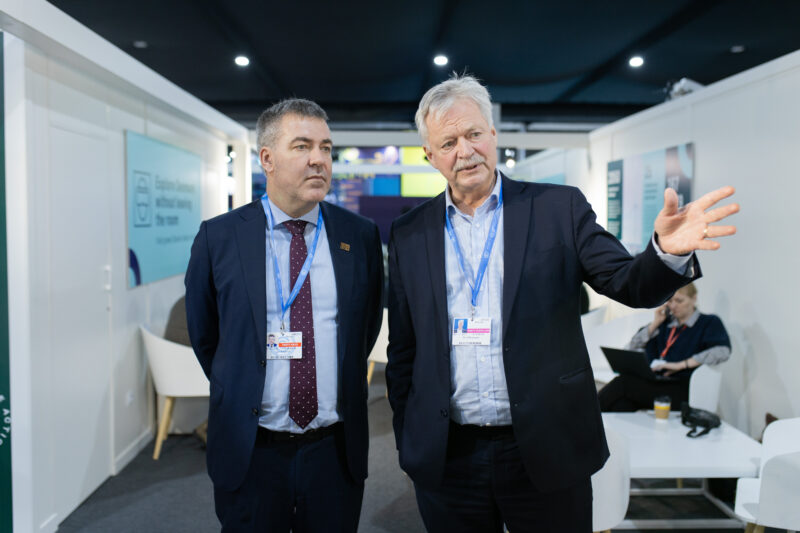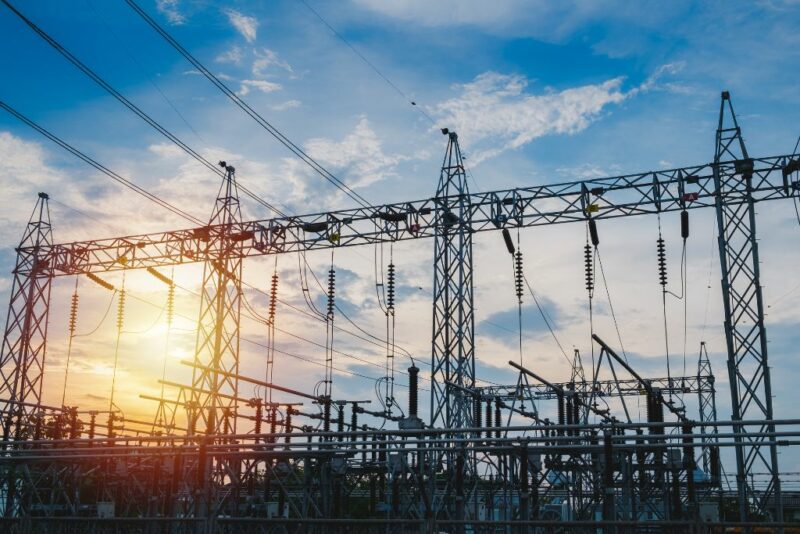News
Danish researcher captures CO2 with mineral: “The theoretical potential is enormous”


Everyone's talking about CO2 these days and not only in the now-conventional sense that less of it should be released into the air. Rather, another increasingly common question is how to capture the unwanted gas from the atmosphere – and what to do with it afterwards, writes Energywatch.eu.
However, another topic not as often entertained concerns whether minerals can be taken directly from nature and inserted into source systems.
That's a mistake, at least if one asks Kristoffer Szilas, associate professor at the University of Copenhagen, Denmark, who carries out research in the mineral olivine, which has been shown to be able to draw out large quantities of ambient CO2.
This potential solution is all the more interesting in that olivine is naturally occurring in many places around the world, for instance, in Greenland, Japan, Oman, California and in the Himalayas. Olivine is forced up from Earth's core via tectonic processes in the form of the mountainous rock peridotite, which is said to comprise more than 80 per cent of the Earth's mantle.
"There's a lot of olivine deep into the part of Earth called the 'mantle'. And olivine is stable at high pressure and high temperatures, which means that when more of it comes to Earth's surface, it becomes unstable and quickly reacts with weather and wind – particularly with CO2 dissolved in rain water," Szilas explained Energywatch.eu.
-Related news: Innovation boom: Danish green energy patents and projects skyrocket in numbers
The process forms a type of magnesium carbonate. In other words, olivine basically absorbs and binds carbon dioxide. There are, for instance, many places in Oman so rich in olivine that enormous measurable volumes of CO2 have been sequestered in the mountains over the years.
"So, we know that it's possible – now the question is just whether we can use it for industrial applications," he says.
That's a part of what Szilas will explore in an impending research project involving a simulation of the natural processes that occur with olivine.
Enormous theoretical potential
The plan is to collect the raw material from an olivine mine in Greenland and test the rock in a University of Copenhagen lab. The experiments will produce knowledge on the optimal conditions for the reaction between olivine and CO2.
Another purpose for the study is to ascertain the economic feasibility of transporting olivine directly to an emissions source like a coal-fired power plant.
According to the associate professor, 1,000 kilograms of olivine can capture 600 kilograms from the air, which is to say much can be accomplished within industry.
"The theoretical potential is enormous," Szilas says and elaborates:
"It would, for example, be possible to remove a quarter of all CO2 from the atmosphere by creating a reaction with merely 1 weight per cent of the olivine found in Oman. The question is then whether we can actually scale this up to such as large scale as is needed. We must figure out if we can do on a regional level and not only locally. My project is the first step in doing so."
Szilas has received a grant of EUR 390,000 from the Independent Research Fund Denmark. Alongside his research team, Szilas will also investigate how much energy is required to transport olivine from mines where it's located compared to the cost of compressing the gas and sending it in the other direction.
-Related partner news: The VELUX Group commits to capture its historical carbon footprint and become Lifetime Carbon Neutral in partnership with WWF
No risk
Further, the project seeks to produce knowledge on the costs of extracting olivine and bringing it to an emissions source – both in terms of economics, but also concerning CO2 balance.
"There are, of course, some expensive solutions, and it's necessary to look at the total CO2 accountancy. It costs energy both to crush and transport the mineral, so this is one of the practical issues we will look into," Szilas says.
It's thereby not only a question of how olivine reacts, but also concerns whether any potentially undesirable reactions with other minerals could occur. Another issue pertains to what to do with trace quantities of nickel and chromium, also found in olivine, and which can harm the environment.
If such obstacles can be eliminated, olivine could then become a pivotal part of the toolbox needed to mitigate climate change. It's no panacea, however, Szilas underscores – at least not yet.
Although the potential benefits are obvious:
"Olivine is the mineral we know to have the greatest potential for drawing CO2 toward itself in mountain ranges and is the most feasible option for large-scale use. So, it's the ideal mineral for this reaction. And if we compare it to, for instance, filling up spent oil fields with CO2, which is also being spoken of, then this has the advantage of not needing to first capture and then compress the CO2," he says and continues:
"Pumping CO2 down into a reservoir can result in certain problems with reactions – among other things, excess pressure can occur. That's also an associated risk. With this, there's no risk, and the CO2 can be taken directly at its source without needing to compress it. One takes it directly to industry."
Cooperating with power generators
The method could be deployed at carbon sources like coal-fired power plants, which could filter exhaust gas via a reaction with water and olivine, binding the CO2 as a carbonate.
That's why Szilas hopes the project will lead to industrial companies implementing the solution at a later time:
"The ideal outcome would be that we gain a better understanding of these reactions and the environmental implications, and that certain industries will take this task upon themselves by scaling it up and implementing it their own processes," the researcher says.
He's counting on being able to test olivine reaction at a later point in the project in conjunction with some of the companies that could use the rock to cut their emissions without forfeiting production.
Sources
Videnskab.dk (in Danish)
Photo by Anthony Gibson on Unsplash
You should consider reading
solutions
Combined heat and power production
+6
CopenHill: The story of the iconic waste-to-energy plant
20 November 2024solutions
Energy efficiency in buildings
+2















